These pictures show the fallacy or myth that simply disconnecting an antenna makes a system safe, and that severe damage to an antenna is always from a direct hit on the antenna.
This damage illustrates why wide or heavy bonding conductors are necessary, and why an entrance panel bonded to the power mains entrance is necessary for protection.
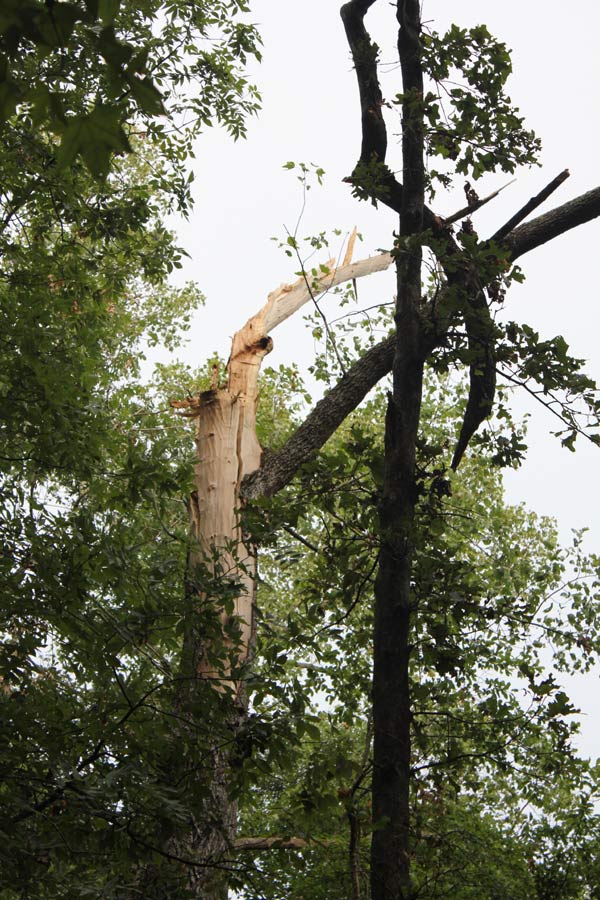
This is the strike area, the top of a tree. It actually blew the tree top apart.
The path down the tree blew bark off.
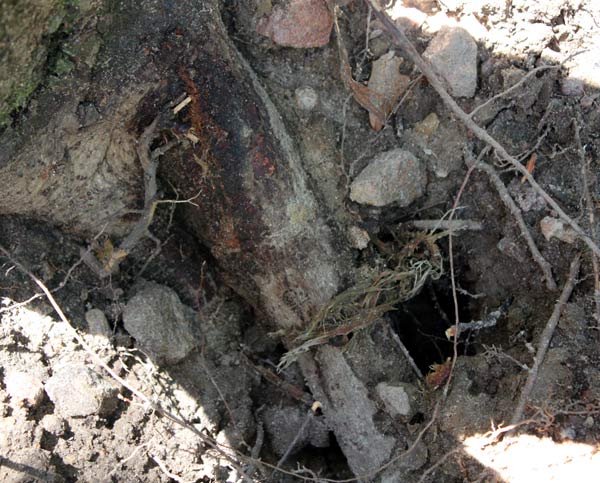
At the root, the lightning blew a big hole in the dirt.
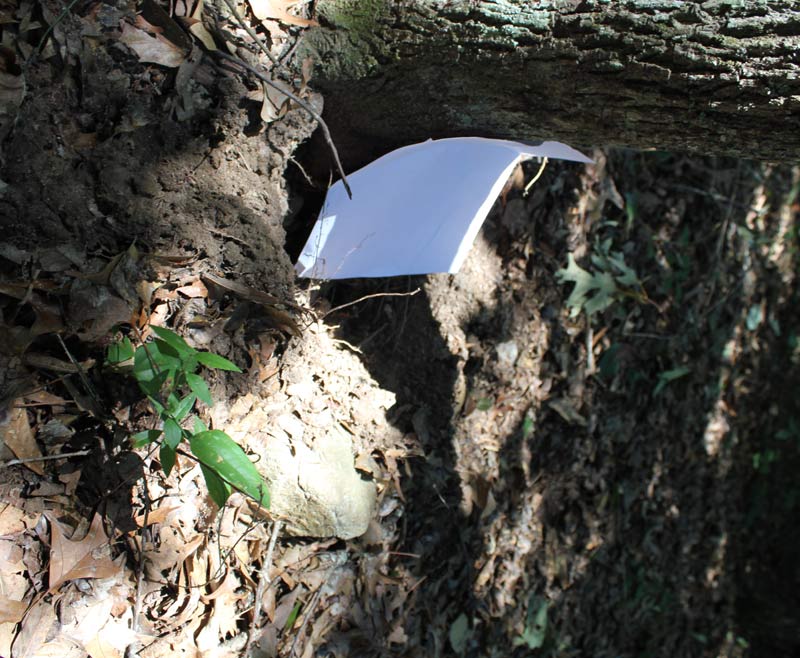
A standard letter size paper fits the hole.
The path from the tree went over about 20-30 feet to the antenna. It looked like a large mole tunnel.
At the center bottom the soil is lifted like a big mole tunnel!
This, very clearly, was not a hit on the antenna itself. The lightning path was traced by lifted soil, about 20-30 feet long, from the tree to the Beverage.
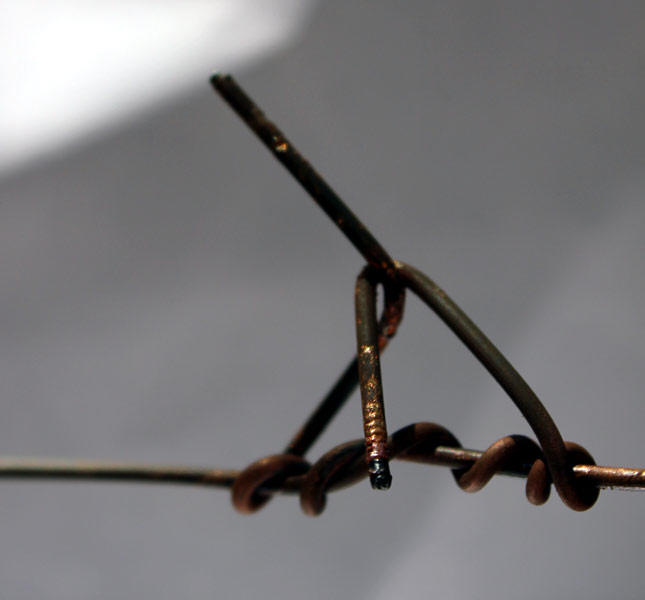
Below the Beverage antenna, lightning made another hole in the soil. The arc actually melted the #14 copperweld beverage wire in two.
(This is a temporary splice to keep the wire out of the way while the bad section was repaired.)
You can see the melted ends. About a foot of wire was missing, and the steel core of this wire was magnetized. Near the arc point, areas of the thick copper cladding were blown off! You can see this in the lower right side of the photo, where the wire is shiny, black, and pitted.
This area of the antenna was about eight feet above ground, suspended in open air. The lightning had no problem forming a path from wire to ground despite an eight-foot air gap between the wire and earth!
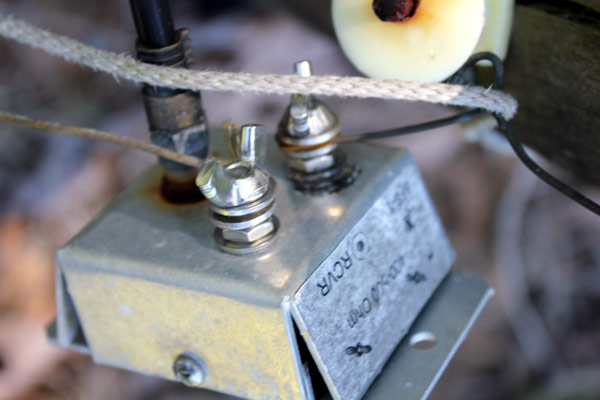
This is the antenna feedpoint, about 200-300 feet from the melted area.
The explosion actually expanded the metal box!!
A melted area around the antenna washer is visible. This washer forms an intentional closely-spaced spark gap.
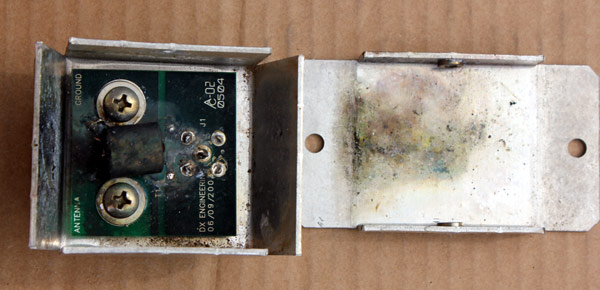
This inside of the box looked like an M-80 went off inside.
The coaxial cable remained good. The isolated transformer windings and independent ground for coaxial shield was enough to prevent shield damage on the feed cable. I'm thinking of adding small "fuse wires", running down the wooden Beverage poles for a few feet.
This shows why disconnecting an antenna will not protect equipment or a house from a close strike, let alone a direct strike on an antenna. Lighting had no problem at all melting the antenna wire in half, and blowing the feedpoint box apart, even with 20-30 feet of gap.
A similar problem repeated in early June 2012 on one antenna, and on July 5th, 2012 on two antennas! In these cases, hundreds of feet of wire were missing.
This is the first this has happened to me in ~50 years as a Ham with long wire antennas, and now it happens multiple times in short periods. Storms must be getting more violent.
Entrance Grounds and other pages